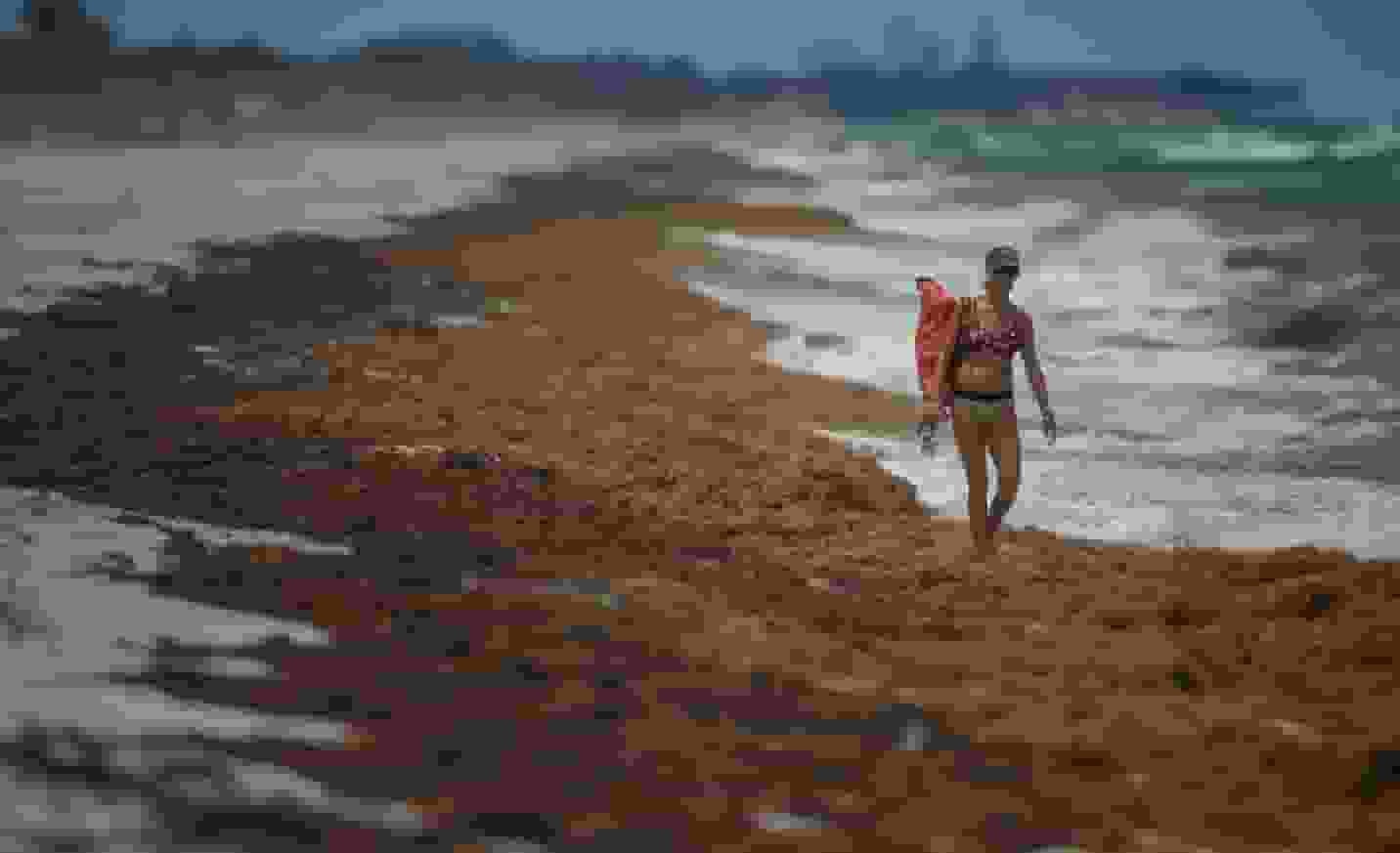The coasts of Florida and other Gulf of Mexico coastlines are under threat from a massive blob of seaweed that is twice the breadth of the continental United States and could deposit foul-smelling, potentially deadly mounds across beaches and dampen the tourist season.
The specific type of seaweed, sargassum, has historically produced significant blooms in the Atlantic Ocean, and scientists have been monitoring enormous accumulations there since 2011.
But, this year’s bloom, which extends over 5,000 miles (8,047 kilometers) from the coast of Africa to the Gulf of Mexico, may be the biggest one ever.
According to Dr. Brian Lapointe, a researcher at Florida Atlantic University’s Harbor Branch Oceanographic Institute, the sargassum bloom this year started to emerge early and doubled in size between December and January. Hesaid that the mass “was larger in January than it has ever been since this new region of sargassum growth began in 2011”.
The thick algal mat that is migrating between the Gulf of Mexico and the Atlantic coast of Africa can act as a carbon dioxide absorber and a refuge for marine life.
READ ALSO: Scientists Near to Exploring Undersea Civilization Through Magnetic Field
Giant Bloom May Have Negative Effects

However, as it approaches the shore, though, the enormous bloom might have fatal effects. Coral, for example, might suffer from a lack of sunlight. Hydrogen sulfide, which has a deleterious effect on the air and water and can cause respiratory issues in nearby residents, can be released as the seaweed breaks down.
According to Brian Barnes, an assistant research professor at the College of Marine Science at the University of South Florida, the sargassum can still be a hazard to critical infrastructure if it remains in coastal waters.
Residents of Florida’s southwest coast have reported having trouble inhaling and having burned eyes as a result of the coming seaweed. Fish carcasses have washed ashore on beaches. A beach event has been postponed even though it wasn’t meant to place for another month.
Concerns were raised this week when the potentially harmful red tide algae surged up along Florida’s southwest coast. In October, the present bloom first appeared. The natural occurrence of red tide, a deadly algal bloom in the Gulf of Mexico, is made worse by the presence of fertilizers like nitrogen in the water.
The Florida Fish and Wildlife Conservation Commission warns against swimming in or close to red tide waters due to the possibility of skin irritation, rashes, burning, and itchy eyes. Those with asthma or lung issues should stay away from beaches that have hazardous algae.
READ ALSO: Florida Man Captures Mysterious Creature on Video; But Here’s the Truth!



